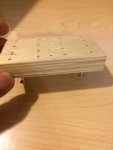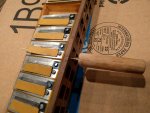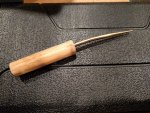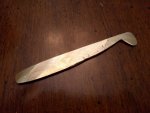M
mpscholle
Guest
Fun idea for a topic... TOOLS!
I thought a good idea would be to talk tools. Repair and Restoration tools.
I'm currently having a friend fashion some key rod bending tools. I'll post a pick later this week if he gets them completed.
But so far here is my list for some essentials.
[*] Needle nose Vise grips!
[*] Electricians pliers
[*] Needle nose pliers
[*] Various sized screw drivers
[*] Small round paint brush
[*] 400+ Grit Sandpaper
[*] Glue (Fabri Tac)
[*] Tweezers
[*] Toothbrush (refreshing leather nap & cleaning)
[*] Small finishing hammer
[*] Measuring Calipers
----
What in still need!!!
[*] Bending rods
[*] Tuning files (any suggestions?)
What else?
I thought a good idea would be to talk tools. Repair and Restoration tools.
I'm currently having a friend fashion some key rod bending tools. I'll post a pick later this week if he gets them completed.
But so far here is my list for some essentials.
[*] Needle nose Vise grips!
[*] Electricians pliers
[*] Needle nose pliers
[*] Various sized screw drivers
[*] Small round paint brush
[*] 400+ Grit Sandpaper
[*] Glue (Fabri Tac)
[*] Tweezers
[*] Toothbrush (refreshing leather nap & cleaning)
[*] Small finishing hammer
[*] Measuring Calipers
----
What in still need!!!
[*] Bending rods
[*] Tuning files (any suggestions?)
What else?





